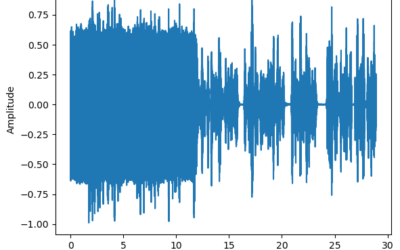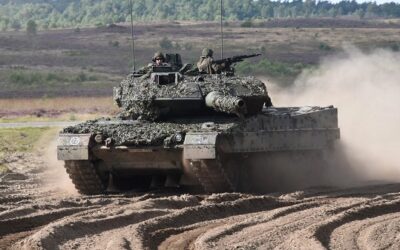Communications Intelligence (COMINT) is an essential battlefield tool, but how can cash-strapped armies acquire such capabilities?
“I looked on the internet, and I could buy lots of military equipment, guns and missiles for example, for under €10,000 ($11,670), but not any COMINT equipment,” Stéphane Sabatier, Chief Executive Officer of Serpikom, told delegates attending this year’s Electronic Warfare Europe conference being held in the western Swiss city of Lausanne between 5 and 7 June.
Mr. Sabatier neatly highlighted the dilemma facing armies around the world which realise they need battlefield COMINT but which either lack the funds to purchase such capabilities amid competing procurement priorities, or are bereft of ‘EW minded’ political masters who can grant precious budget to be spent on the acquisition of such capabilities. Mr. Sabatier argued that some parts of the military domain writ large have been guilty of continuing to perceive EW through a Cold War prism where strategic EW encompasses large, high-maintenance, expensive national assets which are most often static and tasked with answering questions of “why and when.” The same mentality, he argues, perceives tactical systems as primarily concerned with the “medium term, mobile and focused on answering the where and how,” while also being expensive to procure. As well as arguing that these notions are ostensibly linked to the Cold War, Mr. Sabatier expanded that they are primarily focused on symmetrical conflict.
Quoting the ancient Chinese military theorist Sun Tzu, Mr. Sabatier highlighted Mr. Sun’s maxim that “in war everything is a matter of speed. We take advantage of the fact that the other is not ready, we arise unexpectedly.” Mr. Sabatier continued that, in the current environment the desired speed for the flow of information is real time, something that is especially discernible in the EW domain. Yet, he urged the EW domain to ask the question as to whether real-time information is available and affordable for all the participants on today’s battlefields which are increasingly characterised by coalition deployments.
Solving this equation is a matter of “thinking big, but starting small,” Mr. Sabatier expanded. The trick, he posited, is to procure systems which are physically small, yet technologically capable. This is increasingly possible through the application of Software Defined Radio (SDR) technology which can be employed for COMINT collection and is also relatively inexpensive while being programmable and rugged. Mr. Sabatier expanded that he sees the key specifications for such small and deployable COMINT sensors as providing bandwidths in the region of three megahertz/MHz up to six gigahertz to encompass the range of communications systems that COMINT practitioners may encounter on today’s battlefield such as conventional tactical radios and some satellite communications systems. He stressed they must have an instantaneous bandwidth of up to 60 megahertz and be capable of capturing signals at ranges of between three kilometres (1.8 miles) and four kilometres (2.5 miles) with an ideal acquisition price of under $1,200.
The development of such small, low-cost COMINT gathering equipment could have important benefits: “Such a sensor can be left unattended,” noted Mr. Sabatier. This could be facilitated through the use of wireless communications to connect such sensors to COMINT analysis software and COMINT practitioners.
Mr. Sabatier stated that so-called 5G (Fifth Generation) wireless communications could be particularly attractive given the low rates of latency that this wireless communications protocol will provide as it enters service over the next decade. Designing such a COMINT sensor to be small and rugged will have the added benefit that the sensor can be left close to the enemy allowing the gathering of COMINT without needing to risk COMINT personnel in such scenarios.
Ultimately, such an approach should allow the deployment of a large number of small, rugged and affordable COMINT sensors potentially affording an effect in terms of the intelligence they gather far eclipsing the sum of its parts.
Thomas Withington

























